BIOMI 2900: Lecture 41 Review Problems
1/17
Earn XP
Description and Tags
Lecture 41: Vector Transmitted Diseases
Name | Mastery | Learn | Test | Matching | Spaced |
|---|
No study sessions yet.
18 Terms
How are vector-borne disease transmitted?
Transmitted to a human by the bite of an arthropod ‘vector’ (insect, tick), infects but doesn’t cause serious disease in the vector
How is rabies transmitted? Is it a vector borne disease?
Usually transmitted to a person by bite (saliva) from an infected animal
It is not considered vector borne but rather a zoonotic disease (from animal to human)
Where do rabies replicate, travel, and are excreted from?
The virus replicates well in nervous tissue and travels within nerves to the brain, then excreted in the saliva
What should you do if your pet is suspected of rabies?
If your pet is suspected of associated with a rapid wild animal, quarantine for 10 days and watch for symptoms
Is rabies infection fast or slow in humans?
Rabies infection in humans is very slow (9+ months), thus passive immunization is required (injection of human antibodies)
What is the post-mortem and treatment for rabies?
Post-Mortem: Under the microscope, viral inclusions called Negri bodies are found in the cytoplasm
Vaccinate your pets!
There is an efficacious vaccine (inactivated virus) Vets, animal workers are routinely vaccinated
Prophylactics: Injection of Human antibodies against rabies virus
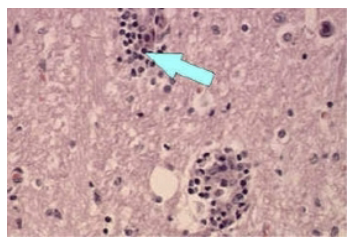
How is dengue fever virus transmitted?
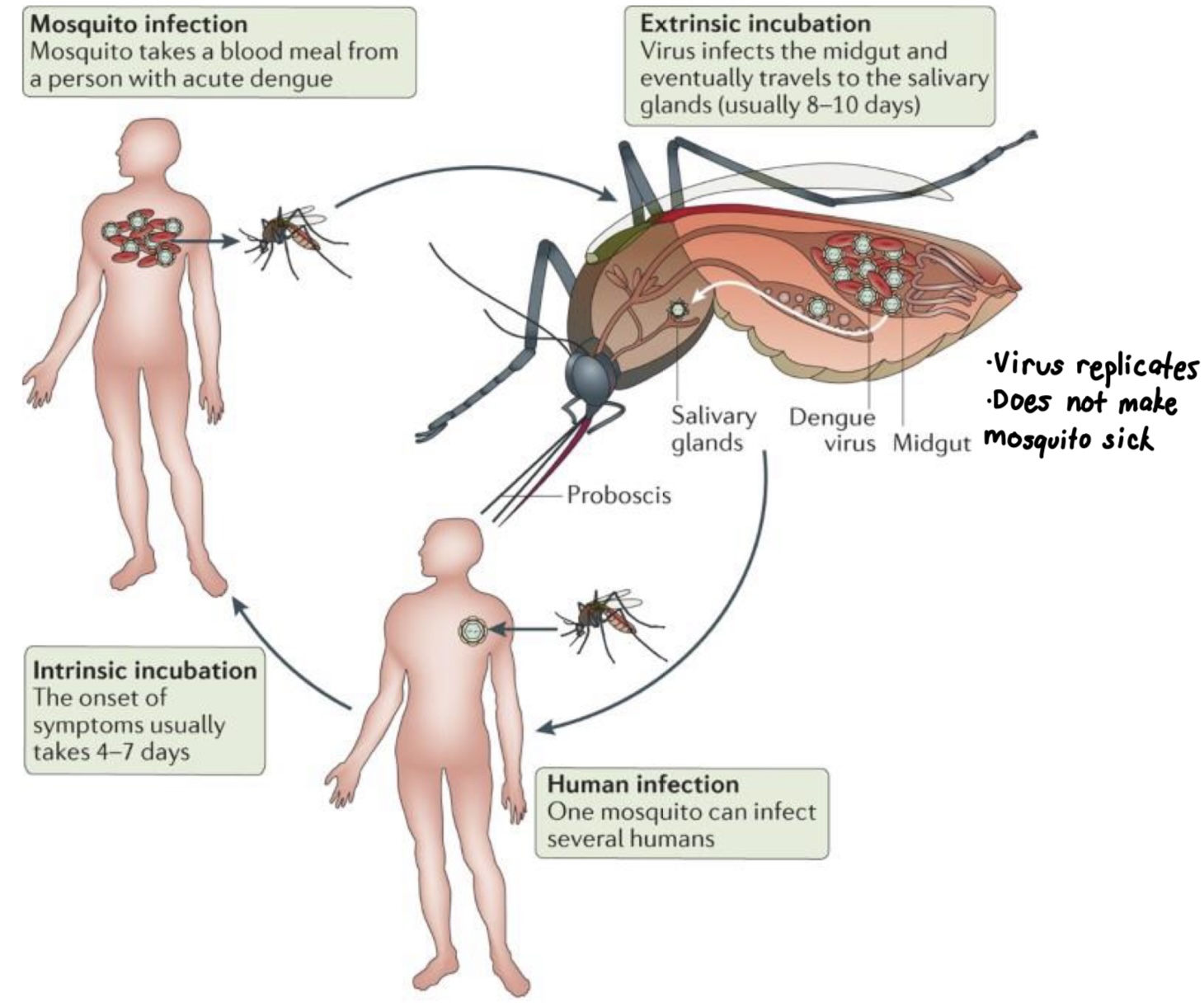
What is dengue virus? How many infections are there annually? What is dengue hemorrhagic fever? How many cases result in death?
Dengue (virus): Dengue is the most common arboviral disease (viral disease transmitted by an arthropod vector)
~390 million infections and 100 million new cases each year, a small proportion of these cases progress to severe dengue
Dengue Hemorrhagic Fever: bleeding, respiratory distress, dramatic drop in blood pressure
Roughly 1 in 2,000 dengue cases result in death
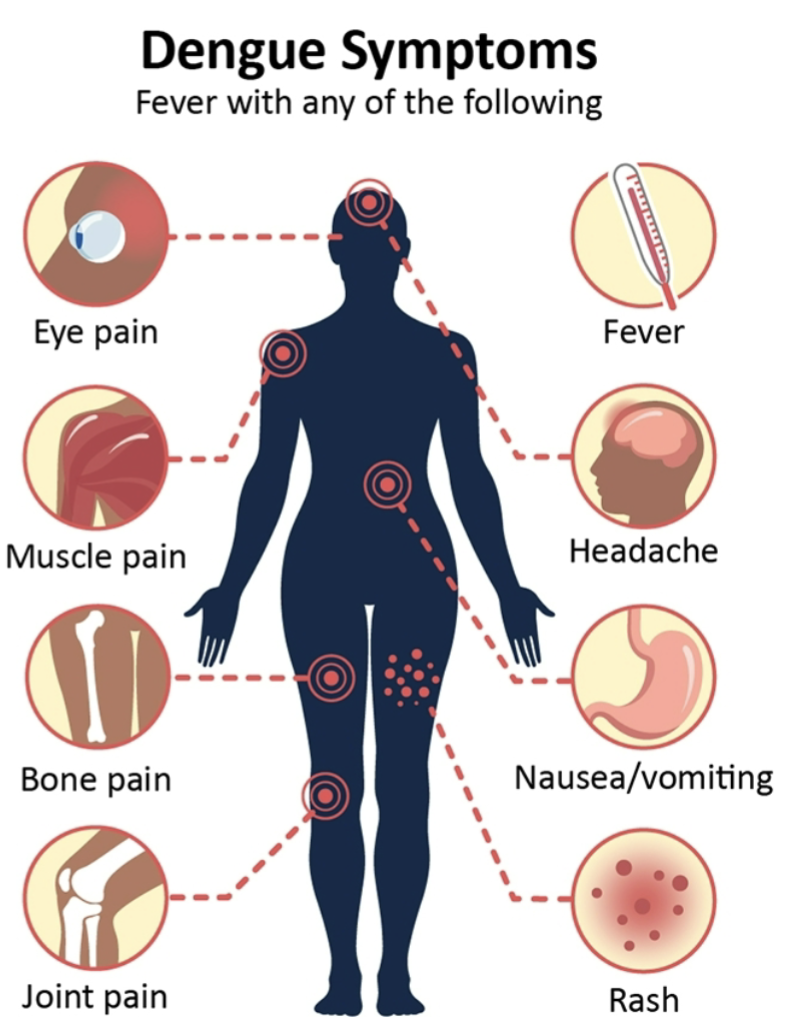
How many known serotypes are there for dengue? What does this imply?
4 known serotypes for dengue
It is hard to make a vaccine since 4 serotypes are going around
What is the protist for malaria? How many annual deaths does it cause globally?
Protist: Plasmodium
Causes more than 600,000 deaths every year globally, most of them children 5 years of age
What is the agent for Lyme disease? Describe what bacteria it is. What is it’s genome arrangement? What is it’s transmission?
Agent: Borrelia burgdorferi
Spirochete, Gram-negative but no LSP, up to 30 μm long corkscrew, motility enhances ability to be transmitted and maintain the bacterial infection
Genome arrangement: one linear chromosome, at least 17 linear and circular plasmids. Plasmids easily lost during culturing in vitro.
Transmission: to humans by Ixodes tick bite, humans appear to be an “accidental host”
In the US, what only transmits Borrelia?
Blacklegged tick
In Northeast US, what is the primary reservoir for B. burgdorferi? How do they reproduce? Do deer get infected by Borrelia?
White-footed field mice and other small warm-blooded animals
To reproduce, the tick must have three blood meals -- it picks up Borrelia with the first meal on an infected rodent
Deer do not become infected with Borrelia but are important in transport of the tick
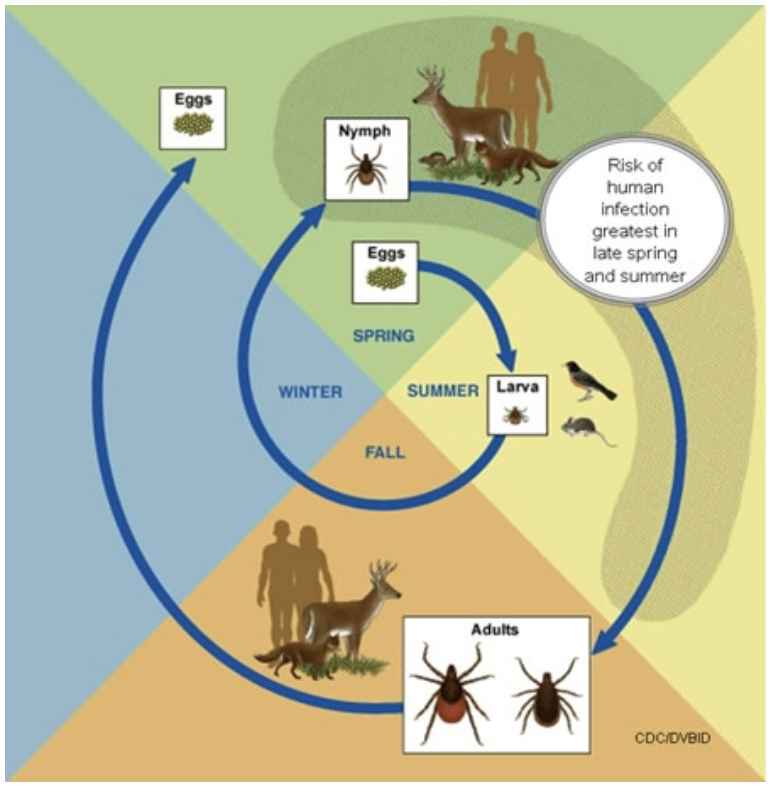
What are the symptoms for Lyme disease?
Symptoms:
First phase (days to first few weeks after transmission), severe headache, fever, fatigue, common but not always a bull’s eye rash (as bacteria spread in the skin)
Second phase (weeks to months), neurological issues – face paralysis (Bell’s palsy), arthritis, carditis (inflammation of the heart)
Third phase (months to years), arthritis especially in knees, tiredness, continued neurological issues
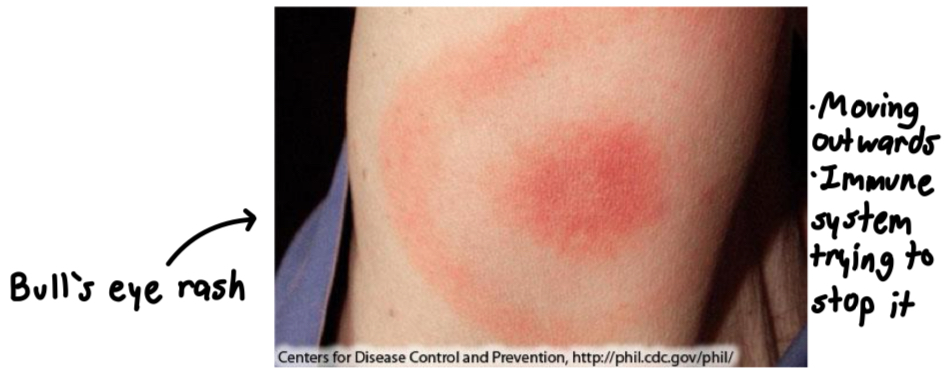
What are the virulence factors for Lyme disease? What is the treatment for Lyme disease?
Virulence factors:
Outer surface proteins (OSP) – bind host cells
Gene duplication and rearrangements of genes coding for OSPs lead to antigenic diversity in surface proteins
Motility – transmission and movement within host tissues
Treatment: Most Lyme disease cases can be
effectively treated with antibiotics (doxycycline or
amoxycillin)
If treated early in infection cycle, oral antibiotics are effective, more advanced cases may require intravenous antibiotics
(vaccine no longer available)
What Lyme disease is considered? It is the most prevalent what in the US? When was it first described? From 2008 until now, how many cases are reported anually?
Lyme disease is considered an “emerging disease” and it is the most prevalent vector-borne human disease in the US
First described in 1977, increase in arthritis in children in Old Lyme, CT. But cases occur elsewhere in US, Europe and Asia
From 2008 – present ~30,000 cases reported each year
What does Borrelia burgdorferi do to the immune system? Can rodents get symptoms from Borrelia burgdorferi? What is the secondary effects of Borrelia burgdorferi caused by?
Borrelia burgdorferi pathogenesis is an immune system over-activation
The immune system of natural host (rodents) has evolved to ignore Borrelia (no disease symptoms)
All secondary effects of Borrelia dissemination are caused by immune system activation (similar to autoimmune disorders → arthritis)
What can gene drives help reduce?
Gene Drives could help to reduce the burden of vector transmitted diseases